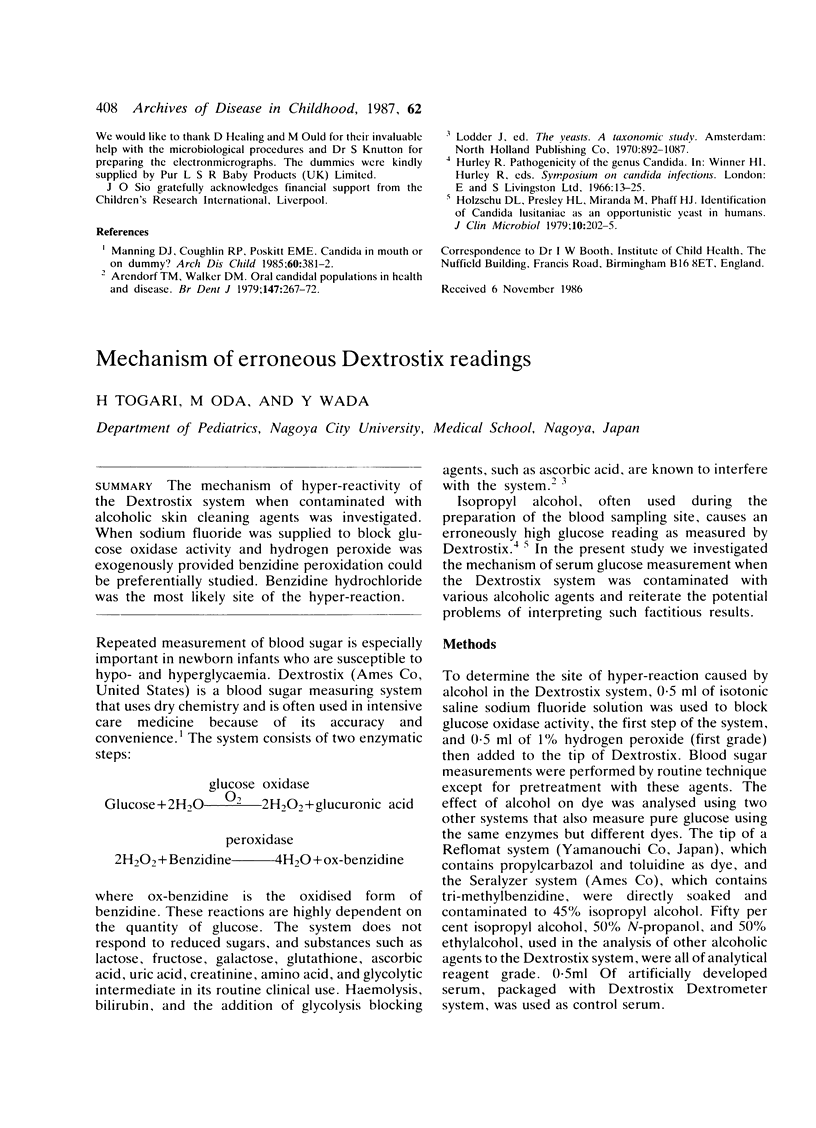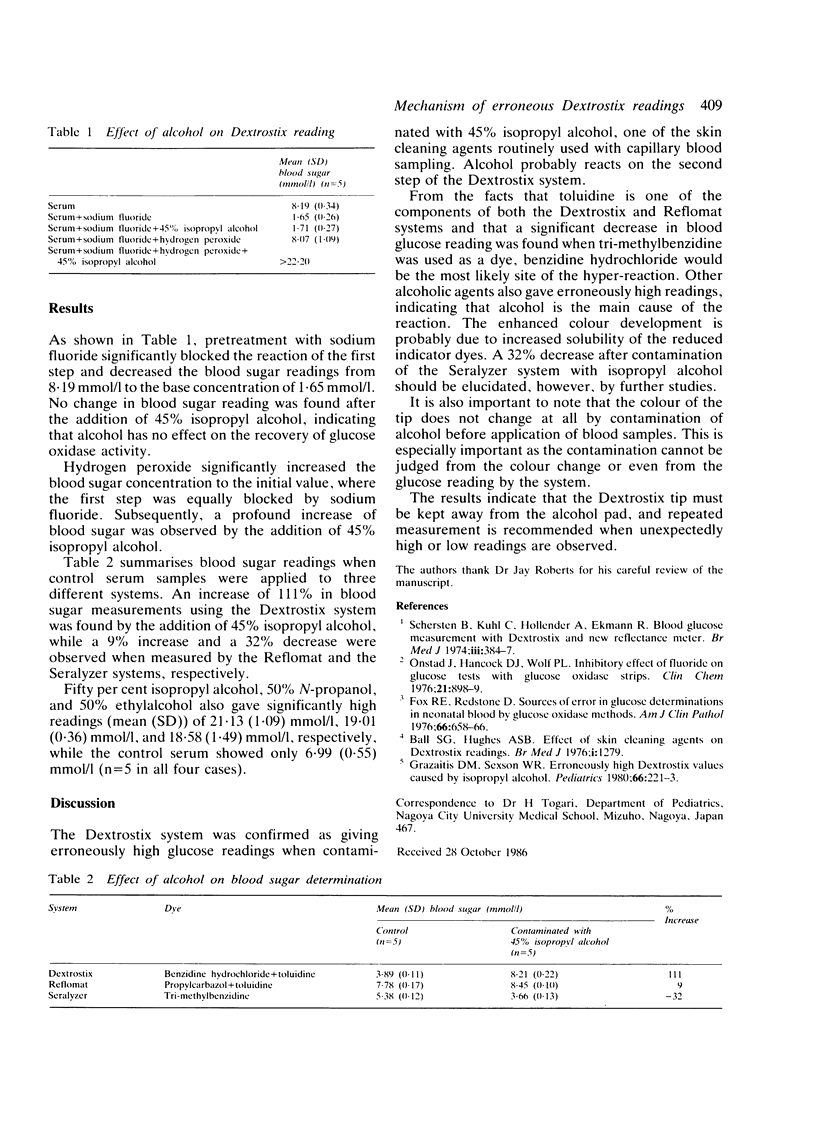Abstract
The mechanism of hyper-reactivity of the Dextrostix system when contaminated with alcoholic skin cleaning agents was investigated. When sodium fluoride was supplied to block glucose oxidase activity and hydrogen peroxide was exogenously provided benzidine peroxidation could be preferentially studied. Benzidine hydrochloride was the most likely site of the hyper-reaction.
Full text
PDF

Selected References
These references are in PubMed. This may not be the complete list of references from this article.
- Ball S. G., Hughes A. S. Letter: Effect of skin-cleaning agents on Dextrostix readings. Br Med J. 1976 May 22;1(6020):1279–1279. doi: 10.1136/bmj.1.6020.1279. [DOI] [PMC free article] [PubMed] [Google Scholar]
- Fox R. E., Redstone D. Sources of error in glucose determinations in neonatal blood by glucose oxidase methods, including Dextrostix. Am J Clin Pathol. 1976 Oct;66(4):658–666. doi: 10.1093/ajcp/66.4.658. [DOI] [PubMed] [Google Scholar]
- Onstad J., Hancock D., Wolf P. L. Inhibitory effect of fluoride on glucose tests with glucose oxidase strips. Clin Chem. 1975 Jun;21(7):898–898. [PubMed] [Google Scholar]
- Schersten B., Kuhl C., Hollender A., Ekman R. Blood glucose measurement with Dextrostix and new reflectance meter. Br Med J. 1974 Aug 10;3(5927):384–387. doi: 10.1136/bmj.3.5927.384. [DOI] [PMC free article] [PubMed] [Google Scholar]


